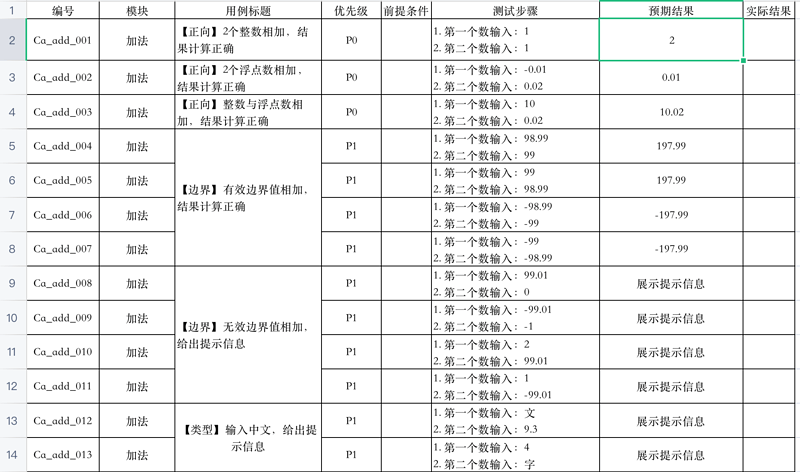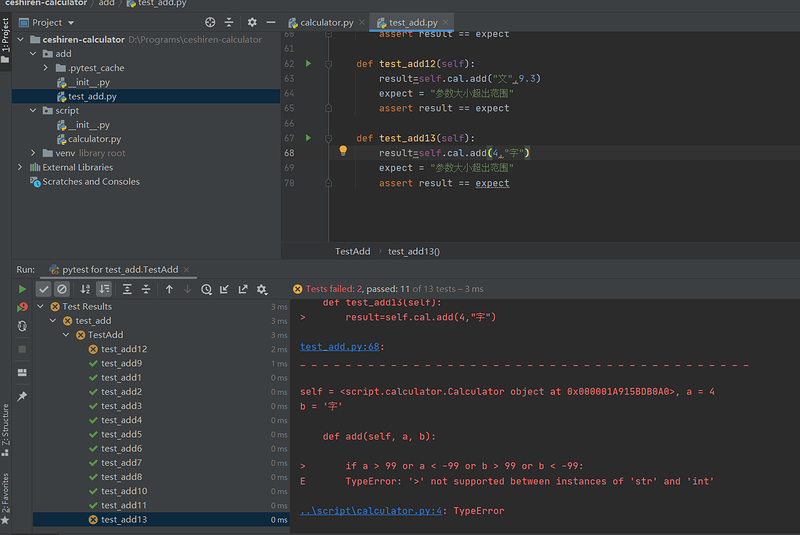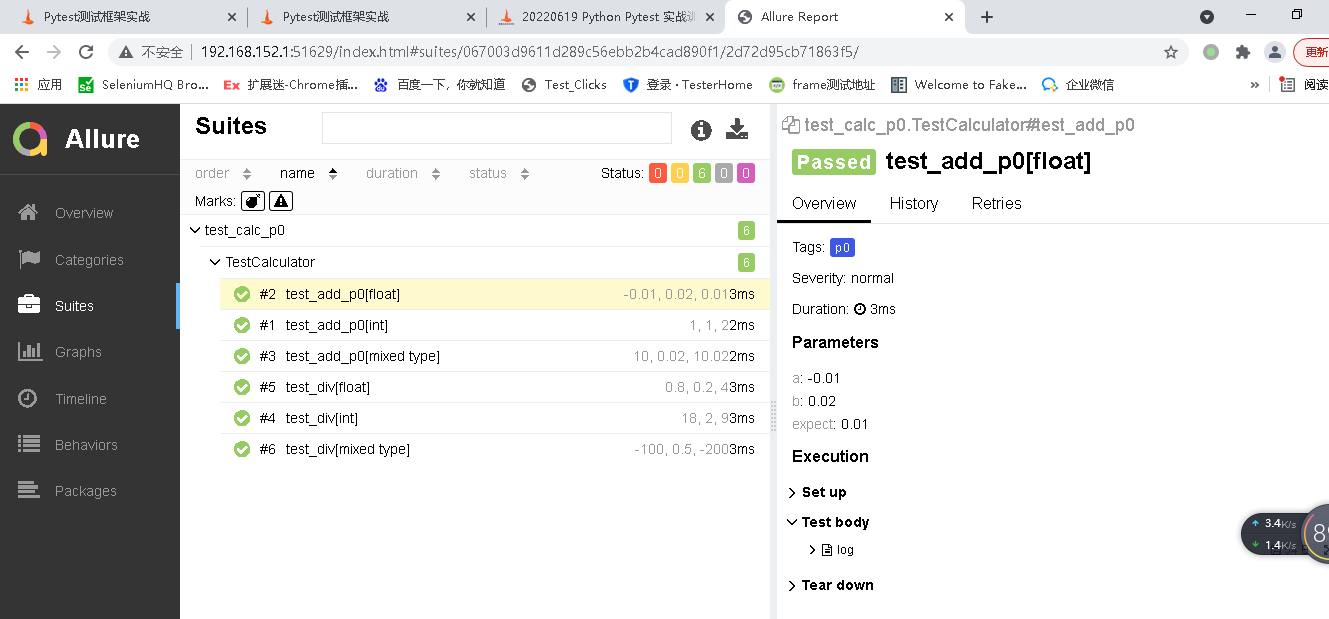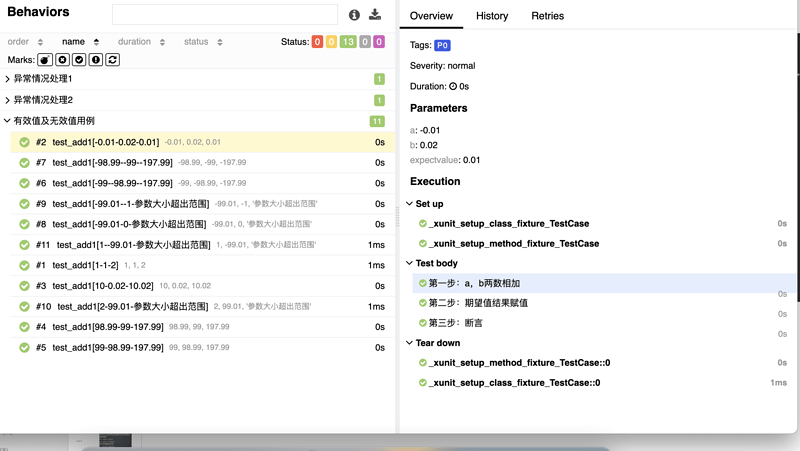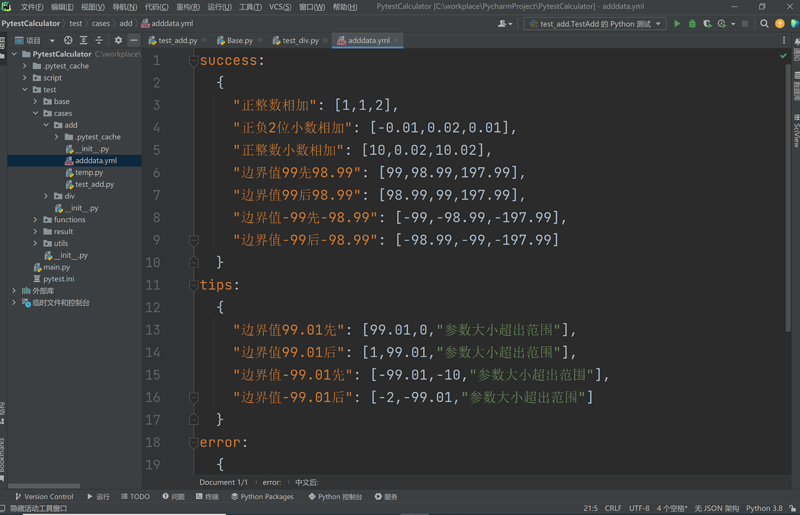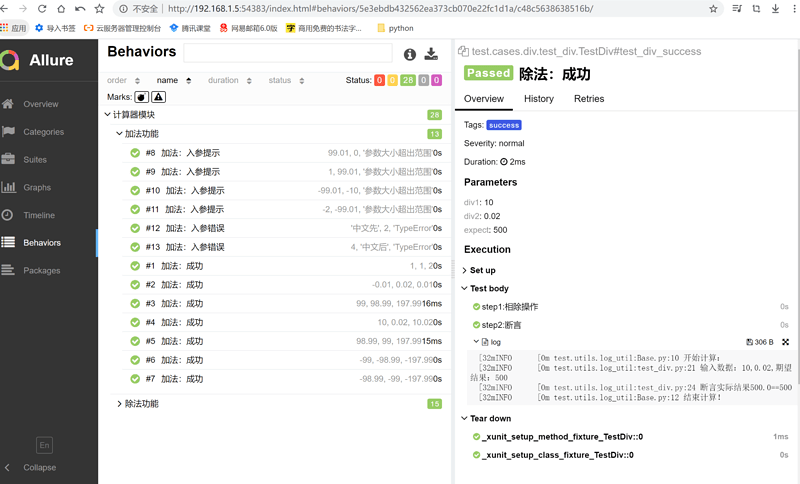参考链接
- 日志模板 python 输出日志配置
PPT
代码地址
学习路线
pytest 学习路线.xmind.zip (73.3 KB)
测试用例
计算器测试用例.xlsx (14.0 KB)
pytest pycharm 环境配置
pip install pytest
测试用例
测试用例编写 1
- 题目:
- 根据需求编写计算机器(加法和除法)相应的测试用例
- 在调用每个测试方法之前打印【开始计算】
- 在调用测试方法之后打印【结束计算】
- 调用完所有的测试用例最终输出【结束测试】
- 为用例添加标签
- 注意:
- a、使用等价类,边界值,错误猜测等方法进行用例设计
- b、用例中要添加断言,验证结果
- c、灵活使用测试装置
被测代码
class Calculator:
def add(self, a, b):
if a > 99 or a < -99 or b > 99 or b < -99:
print("请输入范围为【-99, 99】的整数或浮点数")
return "参数大小超出范围"
return a + b
def div(self, a, b):
if a > 99 or a < -99 or b > 99 or b < -99:
print("请输入范围为【-99, 99】的整数或浮点数")
return "参数大小超出范围"
return a / b
测试代码
class TestAdd:
def test_add1(self):
self.cal = Calculator()
# result 实际
result = self.cal.add(1,1)
expect = 2
assert result == expect

